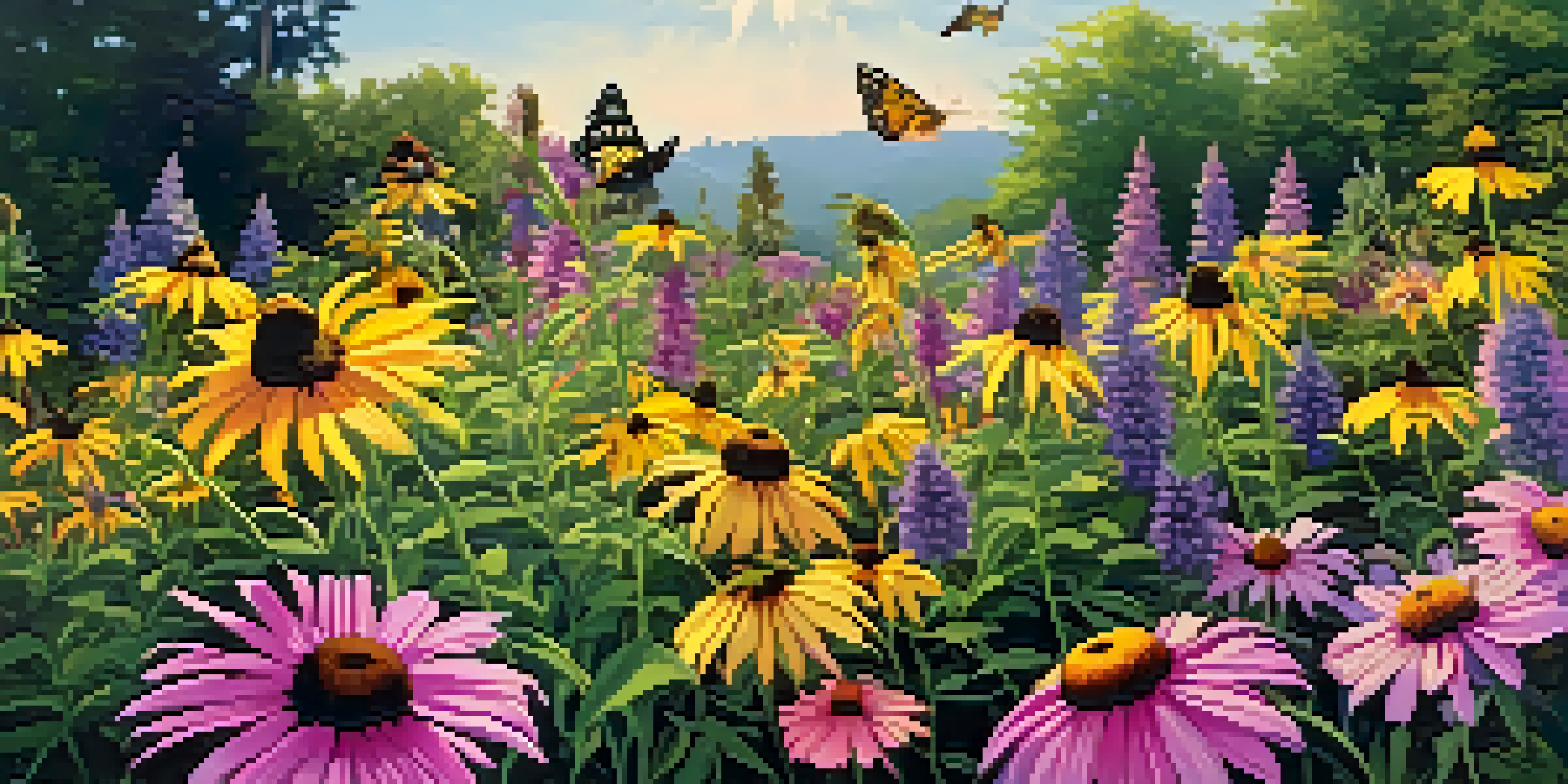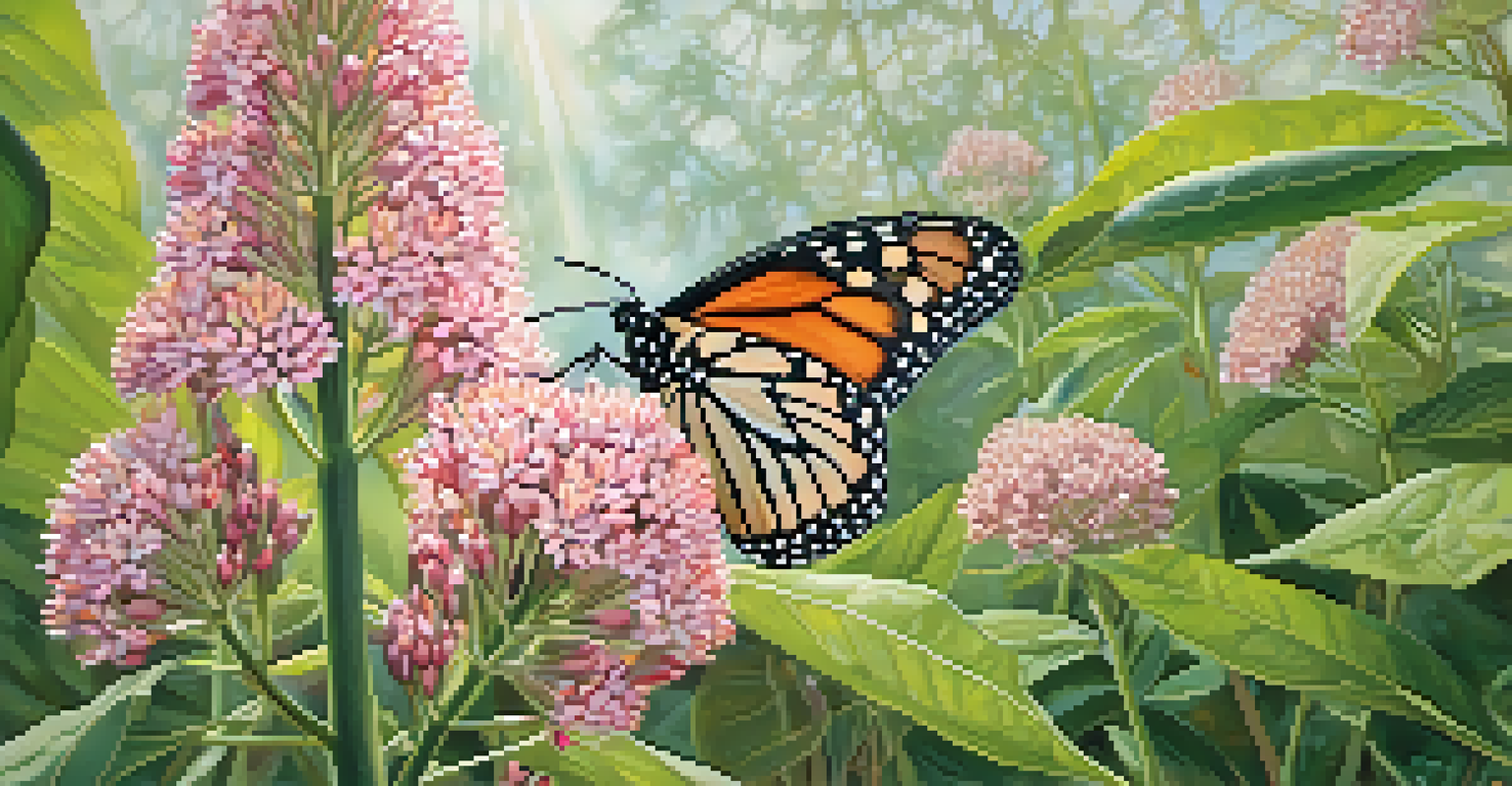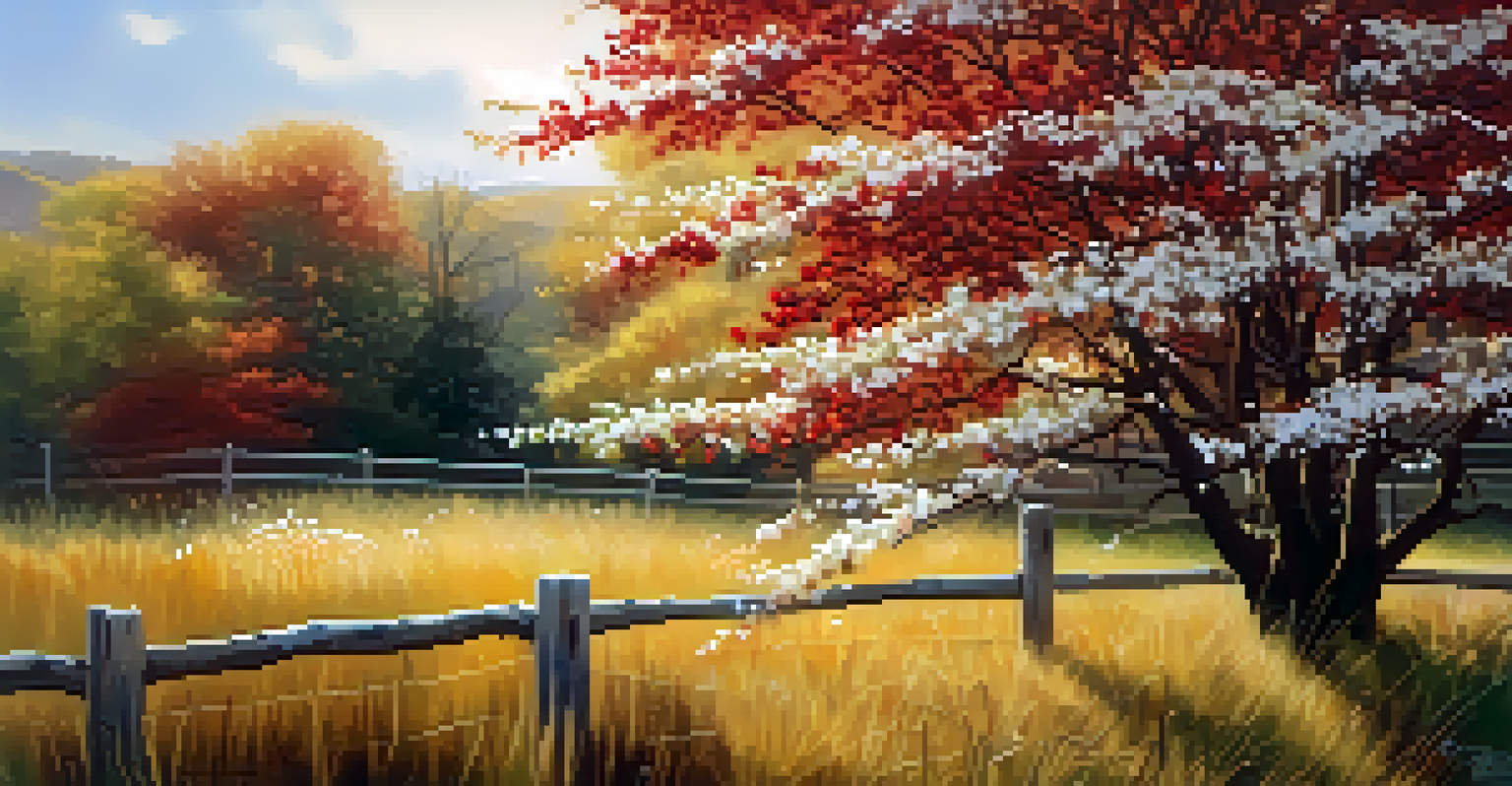Top 10 Native Plants to Attract Local Wildlife to Your Garden

Understanding the Importance of Native Plants
Native plants are species that have evolved in a specific region and are adapted to the local climate and soil conditions. They provide essential food and habitat for local wildlife, including birds, butterflies, and beneficial insects. By including native plants in your garden, you create a thriving ecosystem that supports biodiversity.
The greatest threat to our planet is the belief that someone else will save it.
Unlike non-native plants, native species require less water and fertilizer, making them easier to maintain. This not only helps conserve resources but also reduces the need for chemical interventions that can harm wildlife. Ultimately, choosing native plants is a sustainable choice for your garden and the environment.
Additionally, native plants often have unique beauty, showcasing the natural splendor of your region. From vibrant flowers to lush foliage, they can enhance your garden's aesthetic while serving a vital role in supporting local wildlife.
1. Coneflower: A Pollinator Magnet
Coneflowers, or Echinacea, are not just visually striking; they are a favorite among pollinators like bees and butterflies. Their bright, daisy-like flowers bloom in a variety of colors and attract a multitude of species throughout the summer. Planting coneflowers in your garden is an easy way to create a vibrant, buzzing atmosphere.

These hardy perennials thrive in well-drained soil and full sun, making them perfect for a low-maintenance garden. Once established, they require minimal care and can even tolerate drought conditions. Their resilience means they can thrive in various garden settings, from borders to naturalized areas.
Low Maintenance and Sustainable
Native plants require less water and fertilizer, making them a sustainable choice that conserves resources and reduces chemical use.
Moreover, coneflowers produce seeds that many birds love, especially during the fall and winter months. By including them in your garden, you're not only providing food for pollinators but also a valuable resource for local bird populations.
2. Milkweed: Essential for Monarchs
Milkweed is known as the host plant for monarch butterflies, making it a must-have for any garden aiming to support these stunning insects. The plant's unique flowers attract butterflies and other pollinators, creating a lively, colorful space. Plus, watching monarchs flutter around your garden can be a truly rewarding experience.
Planting native species is one of the simplest and most effective ways to promote biodiversity.
In addition to its appeal to butterflies, milkweed also provides habitat for other wildlife, including various caterpillars and beneficial insects. By incorporating milkweed into your landscape, you're helping to sustain the entire life cycle of monarchs and other essential species. This connection between plants and wildlife highlights the importance of biodiversity.
Milkweed is relatively easy to grow and can thrive in various soil types, making it versatile for different garden styles. Once it's established, it will return year after year, offering ongoing support for wildlife without needing constant care.
3. Black-eyed Susan: A Bright Addition
Black-eyed Susans, or Rudbeckia, are cheerful flowers that not only brighten up gardens but also attract a variety of pollinators. Their sunny yellow petals and dark centers create a striking contrast, making them a favorite among gardeners and wildlife alike. These flowers bloom in mid-summer, providing a crucial source of nectar during the peak pollinator season.
These hardy perennials thrive in full sun and can tolerate poor soil, making them an excellent choice for less-than-ideal garden spots. They are low-maintenance and can easily naturalize, meaning they will spread and fill your garden space beautifully over time. Plus, they are drought-resistant once established, which is a bonus for maintaining a sustainable garden.
Native Plants Support Biodiversity
Incorporating native plants in your garden enhances local ecosystems by providing vital food and habitat for wildlife.
Furthermore, black-eyed Susans produce seeds that attract birds in the fall, continuing their contribution to local wildlife even after the blooms have faded. By planting these flowers, you're creating a multi-season habitat that supports a variety of creatures.
4. Aster: Late-Season Nectar Source
Asters are essential late-season blooming plants that provide food for pollinators when many other flowers have wilted. Their delicate blooms in shades of blue, purple, and white attract a wide range of butterflies and bees, making them an important addition to any wildlife-friendly garden. They help extend the blooming season, keeping your garden lively even as summer ends.
These perennial plants thrive in various soil types and can adapt to different light conditions, from full sun to partial shade. This adaptability makes them suitable for a range of garden designs and settings. With their ability to spread and fill in space, asters can create beautiful, colorful patches in your landscape.
Additionally, aster seeds are a food source for birds during the colder months. By incorporating aster into your garden, you're not only providing late-season nectar for pollinators but also supporting birds in their search for sustenance.
5. Goldenrod: A Pollinator Superfood
Goldenrod is often misunderstood as a culprit for allergies, but in reality, it's a powerhouse for pollinators. Its bright yellow flowers attract bees, butterflies, and other beneficial insects, making it an essential plant for any wildlife garden. Blooming in late summer to fall, goldenrod provides critical nectar at a time when many other plants have finished flowering.
This hardy perennial thrives in a variety of soil conditions and is drought-resistant once established. It grows tall and can create beautiful, lush patches that enhance your garden's visual appeal while supporting local wildlife. Its robust nature means it can handle tough conditions, making it a reliable choice.
Attractive and Functional Flowers
Plants like coneflowers and milkweed not only beautify your garden but also attract essential pollinators and support local wildlife.
Goldenrod also serves as a habitat for various insects and provides seeds that attract birds in the winter months. By planting goldenrod, you are contributing to a more diverse ecosystem, supporting both pollinators and avian populations.
6. Serviceberry: A Wildlife Buffet
Serviceberry, or Amelanchier, is a small tree or shrub that offers a buffet for wildlife throughout the seasons. In spring, it produces beautiful white flowers, followed by sweet, edible berries in early summer. These berries are a favorite for birds, squirrels, and even humans, making it a delightful addition to any garden.
This adaptable plant grows well in various soil types and can thrive in sun or partial shade. Its multi-season appeal makes it a fantastic choice for gardens looking to support wildlife year-round. Plus, the fall foliage displays stunning colors, adding to the aesthetic value of your landscape.

Serviceberry not only provides food for wildlife but also offers a habitat for nesting birds and other small creatures. By incorporating this plant into your garden, you're creating a welcoming environment for both pollinators and mammals alike.
7. Purple Coneflower: Resilient and Attractive
The purple coneflower is a garden favorite known for its vibrant purple petals and distinctive cone-shaped center. This resilient plant attracts a variety of pollinators, including bees and butterflies, making it a beautiful yet functional addition to your yard. Its long blooming period ensures that your garden remains lively and colorful throughout the summer.
Purple coneflowers thrive in well-drained soil and full sun, making them ideal for low-maintenance gardens. Once established, they can tolerate drought conditions, allowing you to enjoy their beauty without constant care. Their ability to naturalize means they can spread and fill your garden over time, creating a stunning display.
In addition to being visually appealing, purple coneflowers produce seeds that attract birds, providing food during the colder months. By planting this hardy perennial, you’re not only enhancing your garden’s aesthetics but also creating a supportive environment for local wildlife.
8. Native Grasses: Foundation for Wildlife Habitat
Native grasses are often overlooked but play a crucial role in creating a healthy ecosystem. They provide essential cover and nesting sites for birds and small mammals while also stabilizing soil and preventing erosion. Incorporating native grasses into your garden can enhance its overall health and biodiversity.
These grasses are adapted to local conditions and often require less water and maintenance than traditional lawn grasses. They come in various heights and textures, adding visual interest to your garden while serving a functional purpose. Whether you choose tall grasses for a dramatic effect or shorter varieties for ground cover, they can complement your native plants beautifully.
Moreover, native grasses produce seeds that feed numerous birds and small animals, supporting a diverse range of wildlife. By including these grasses in your landscape, you’re not just creating a beautiful garden; you’re building a thriving habitat that benefits local wildlife.